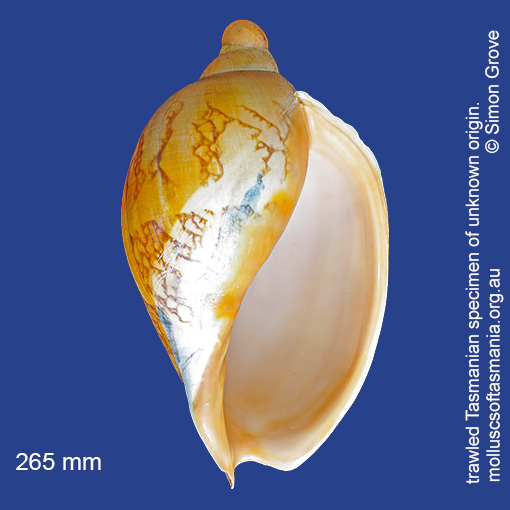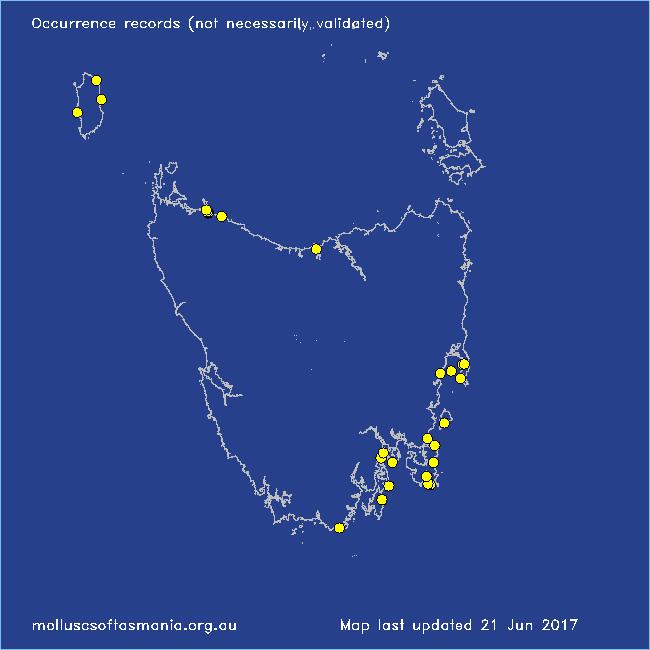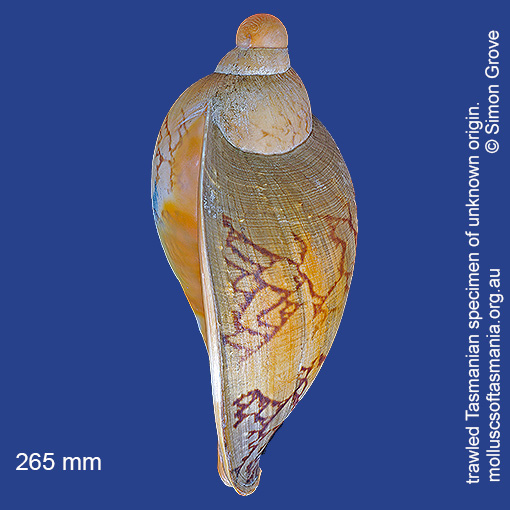
Volutidae – Cymbiinae: Livonia mammilla (G. B. Sowerby I, 1844) (‘false baler’)
Synonym(s): mammilla Sowerby, 1844 leucostoma Mayblom, 1951 quisqualis Iredale, 1957.
Typical shell-length 300 mm. The largest gastropod in Tasmania. The greatly swollen apex is distinctive. Lives subtidally and offshore on sand and mud, emerging at night to feed. Native. Endemic to southern and eastern Australia (QLD, NSW, TAS, VIC and SA). In Tasmanian waters, this is a widespread species, but seldom beached intact.
N.B. The name quisqualis may refer to a hybrid between L. mammilla and L. roadknightae.
Classification
Class: Gastropoda
Subclass: Caenogastropoda – Sorbeoconcha
Order: Hypsogastropoda – Neogastropoda
Superfamily: Muricoidea
Family: Volutidae
Subfamily: Cymbiinae
Genus: Livonia
Localities for Livonia mammilla
Bangor: Lagoon Bay
Black River Beach
Black River Beach: northern end
Black River Beach: southern end
E coast of Tasmania (unlocalised)
Freycinet Peninsula: Hazards Beach
Freycinet Peninsula: Wineglass Bay
King Island: Lavinia Beach: beach nr Lake Martha Lavinia
King Island: Sea Elephant Bay: Cowper Point
King Island (unlocalised)
Maria Island: Trigonia Corner
Marion Bay: Bream Creek foreshore
North Bruny Island: Miles Beach
Peggs Beach: western end
Pirates Bay: Fossil Island
Port Sorell (unlocalised)
Rocky Cape: Forwards Beach
Schouten Island: Sandspit Point
South Arm: Hope Beach: southern end
South Bruny Island: Adventure Bay (unlocalised)
South coast of Tasmania (unlocalised)
South East coast of Tasmania (unlocalised)
Taroona Beach
Tasmania (unlocalised)




